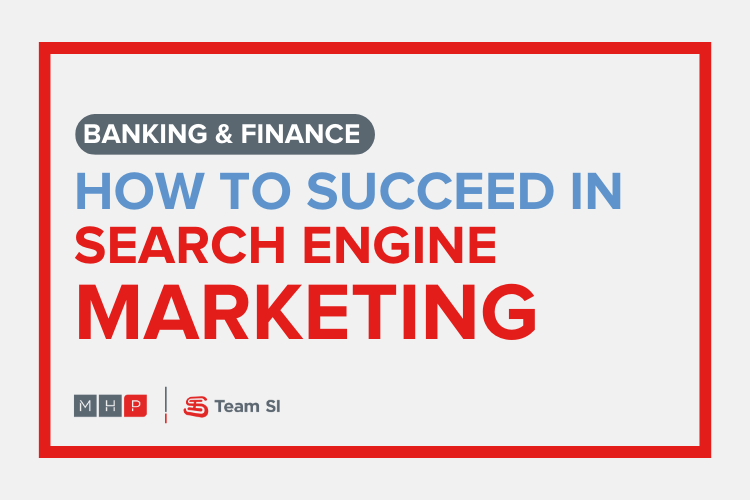
Performance marketing is the name of the game for banks and financial institutions. In an industry that is all about money, it’s vital that you see return-on-investment (ROI) in your marketing. You need to know how your marketing spend directly contributes to new customers and more revenue.
At MHP/Team SI, we’ve put together a solid performance marketing plan for banks. In our experience earning and proving ROI for banks, one of the most important strategies we’ve utilized is search engine marketing (SEM).
In a blog last month, we discussed the benefits SEM provides for banks and financial institutions. Search engines are a primary battleground for customers at the top of the marketing funnel. SEM allows businesses to catch those customers in the awareness stage and move them towards an action.
If you’re convinced of the importance of SEM and want to implement it into your marketing strategy, we have some tips for you. Here are ten steps we follow when building an SEM campaign:
1. Define campaign goals: Clearly define your objectives, such as increasing website traffic, generating leads or boosting online sales.
2. Keyword research: Identify relevant keywords and phrases that your target audience is likely to use when searching for products or services similar to yours.
3. Ad creation: Create compelling and relevant ads that align with the chosen keywords. Craft enticing headlines, engaging ad copy and include relevant call-to-action statements.
4. Landing page creation: Develop dedicated landing pages that are optimized for the specific keywords and ads. Ensure that the landing pages offer a seamless user experience and encourage visitors to take the desired action.
5. Campaign setup: Use a search engine advertising platform, such as Google Ads, to set up your campaign. Define campaign parameters, including target audience demographics, geographic targeting, budget, bidding strategy and ad scheduling.
6. Ad targeting and bidding: Refine your targeting options based on factors like location, language, device and demographics. Choose a bidding strategy that aligns with your campaign goals, such as maximizing clicks, conversions or return on ad spend (ROAS).
7. Ad monitoring and optimization: Regularly monitor the performance of your ads, including click-through rates (CTRs), conversion rates and cost-per-click (CPC). Make data-driven adjustments to improve campaign effectiveness, such as modifying keywords, ad copy or bids.
8. Conversion tracking and measurement: Set up conversion tracking to measure the effectiveness of your SEM campaign. Track specific actions like form submissions, purchases or phone calls resulting from your ads. Analyze conversion data to refine your targeting and optimize your campaign further.
9. Continuous testing and refinement: Conduct A/B tests to compare different ad variations, landing pages and targeting options. Test different ad formats, such as text ads, display ads or video ads, to identify the most effective approach.
10. Ongoing campaign management: Continuously monitor, analyze and adjust your SEM campaign to maintain optimal performance. Stay updated with industry trends, search engine algorithms and competitor strategies to stay ahead.
Building and serving a successful SEM campaign involves thorough research, strategic planning, precise execution and continuous optimization to maximize your reach and achieve your campaign goals.
We know it sounds like a lot. Because it is. More often than not, it’s helpful to have an experienced team assist you in getting your SEM campaign off the ground.
The performance marketing experts at MHP/Team SI have run dozens of successful search engine marketing campaigns in the past (See our case studies for proof!). Fill out the form below to start a conversation about how performance marketing can help your bank win.



